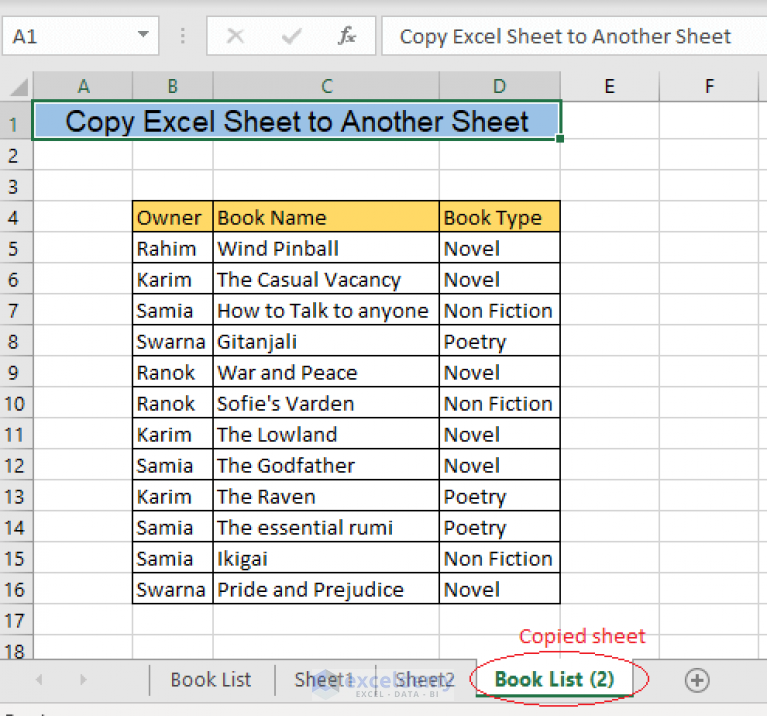Copy Paste Mastery: Excel Worksheet Simplified

In today's fast-paced, data-driven environment, mastering the art of copy and paste in Excel can significantly enhance your productivity and streamline your workflows. Whether you're managing extensive datasets or just looking to save time on repetitive tasks, understanding the various methods of copying and pasting in Excel is crucial. This blog post delves deep into the world of Excel copy and paste, providing you with comprehensive insights, techniques, and shortcuts to simplify your work.
Introduction to Copying and Pasting in Excel

Excel provides multiple ways to copy and paste data, each suited for different scenarios. Here are the basic functions you need to know:
- Ctrl + C: Copy selected data
- Ctrl + V: Paste data
- Right-click Menu: Offers a range of paste options
- Paste Special: Allows for more advanced pasting options

Basic Copy and Paste Techniques

Standard Copy and Paste

The simplest method involves:
- Selecting the cells or range you want to copy.
- Pressing Ctrl + C or using the Copy option from the right-click context menu.
- Selecting the destination where you want to paste the data.
- Pressing Ctrl + V or selecting Paste.
💡 Note: Copying and pasting will also carry over any formats, formulas, or other attributes from the original cells.
Copy and Paste Formatting Only

If you want to copy just the formatting:
- Copy the source cells as described above.
- Go to the Home tab, then in the Clipboard section, click on the arrow under Paste, and choose Paste Special.
- Select Formats from the dialog box.
💡 Note: This method is perfect for maintaining consistent formatting across multiple cells without changing the underlying data.
Advanced Copy and Paste Techniques

Using Paste Special

Paste Special is your gateway to more nuanced copying:
| Option | Description |
|---|---|
| Values | Pastes only the content without any formatting. |
| Formulas | Copies the formulas from the source cells. |
| Transpose | Changes the orientation of the copied data. |
| Operations | Performs arithmetic operations during paste. |

💡 Note: The 'Operations' function can be incredibly useful for quick data manipulation when pasting, allowing you to add, subtract, multiply, or divide values as they are pasted.
Copy and Paste Across Workbooks

To copy and paste data between different workbooks:
- Open both source and destination workbooks.
- Copy the data from the source workbook.
- Switch to the destination workbook and paste the data.
💡 Note: Ensure both workbooks are saved in the same location or keep them open in the same Excel instance to avoid path issues.
Dragging and Dropping Data

Another way to move or copy data quickly within a workbook is by:
- Selecting the cells you want to copy or move.
- Dragging the selection to the new location.
- Using Ctrl while dragging to copy, rather than move.
💡 Note: This technique can be more intuitive but lacks the advanced features of Paste Special.
Utilizing Excel Shortcuts

To maximize efficiency, familiarize yourself with these shortcuts:
- Ctrl + D: Fill down (copy the content and format of the topmost cell in a selected range).
- Ctrl + R: Fill right (copy to the right cells).
- Alt + E, S, V, Enter: Quick paste values shortcut.
💡 Note: Mastering shortcuts can significantly reduce the time spent on repetitive tasks, increasing your productivity.
Tips for Effective Copy and Paste

- Use Name Ranges: Instead of copying cell references, name ranges to keep formulas intact and clean when copying.
- Be Mindful of Paste Special Options: They can change data in unexpected ways, so always review your results.
- Try AutoFill: For sequential data, using the fill handle can save time on copying similar data.
By adopting these techniques, you'll not only streamline your work but also avoid common pitfalls like overwriting important data or losing formatting. Copying and pasting might seem simple, but in Excel, it opens up a world of possibilities for data management and presentation.
In summary, mastering the art of copy and paste in Excel involves understanding its various functionalities, employing shortcuts, and making use of advanced options like Paste Special. With these tools at your disposal, you can manipulate, format, and manage your data more effectively, leading to increased efficiency and accuracy in your work.
What are the primary benefits of using Paste Special in Excel?

+
Paste Special in Excel allows for precision in copying and pasting. It offers options like pasting values, formulas, formats, or performing arithmetic operations, which is crucial for data manipulation without altering the original dataset or for applying specific changes to large amounts of data quickly.
How can I copy and paste only cell values without formulas?

+
To copy and paste only the cell values without formulas, select the cells, copy them (Ctrl + C), then go to the destination, right-click, and choose ‘Paste Special’ from the menu. Select ‘Values’ to paste just the data.
Can I transpose data while pasting?

+
Yes, you can. Use the ‘Paste Special’ option and select ‘Transpose’ to change the orientation of your copied data from columns to rows or vice versa.



